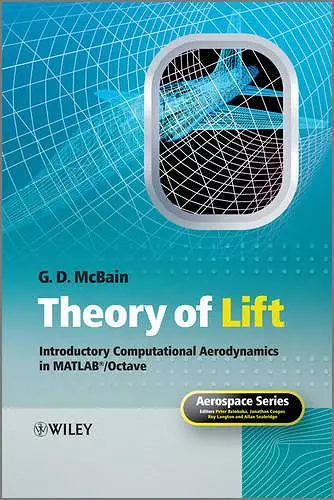Theory of Lift
Introductory Computational Aerodynamics in MATLAB/Octave
G D McBain author Allan Seabridge editor Jonathan Cooper editor Peter Belobaba editor Roy Langton editor
Format:Hardback
Publisher:John Wiley & Sons Inc
Published:6th Jul '12
Should be back in stock very soon

Starting from a basic knowledge of mathematics and mechanics gained in standard foundation classes, Theory of Lift: Introductory Computational Aerodynamics in MATLAB/Octave takes the reader conceptually through from the fundamental mechanics of lift to the stage of actually being able to make practical calculations and predictions of the coefficient of lift for realistic wing profile and planform geometries.
The classical framework and methods of aerodynamics are covered in detail and the reader is shown how they may be used to develop simple yet powerful MATLAB or Octave programs that accurately predict and visualise the dynamics of real wing shapes, using lumped vortex, panel, and vortex lattice methods.
This book contains all the mathematical development and formulae required in standard incompressible aerodynamics as well as dozens of small but complete working programs which can be put to use immediately using either the popular MATLAB or free Octave computional modelling packages.
Key features:
- Synthesizes the classical foundations of aerodynamics with hands-on computation, emphasizing interactivity and visualization.
- Includes complete source code for all programs, all listings having been tested for compatibility with both MATLAB and Octave.
- Companion website (www.wiley.com/go/mcbain) hosting codes and solutions.
Theory of Lift: Introductory Computational Aerodynamics in MATLAB/Octave is an introductory text for graduate and senior undergraduate students on aeronautical and aerospace engineering courses and also forms a valuable reference for engineers and designers.
“This book is a very useful digest of key points from the literature, carefully structured and presented with helpful pointers as to how the successive aerodynamical models can be implemented in the ‘now so readily available interactive matrix computation systems.” (AeronauticalJournal, 1 August 2013)
ISBN: 9781119952282
Dimensions: 252mm x 175mm x 20mm
Weight: 662g
352 pages